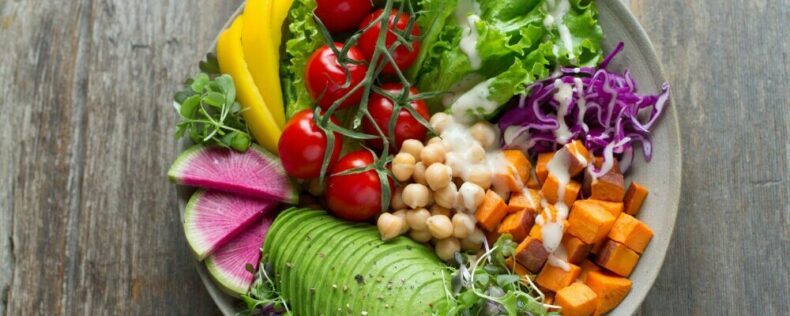Restricting your calories in an attempt to lose weight can be very demanding in many ways. Physically, you must be able to tolerate the hunger and fatigue that comes with eating at a calorie deficit. Mentally, you must be able to manage your cravings, control your appetite, and stay disciplined even when it gets extremely difficult. That being said, limiting your calories doesn’t always require a complete overhaul of your diet, and there are simple ways for how to cut back on calories besides resorting to eating less.
You might not realize it yet, but if you start paying close attention to the calorie content in what you consume, it can be shocking how many extra calories you’re likely ingesting without realizing, and how easily they could be eliminated without making any noticeable impact on your diet. In this post, I want to cover some of the easiest ways to remove unnecessary calories from your diet.
Coffee
You probably think nothing of your morning coffee, but for many people, their go-to beverage to start the day can play a big role in whether they’ll end the day in a calorie deficit or surplus.
Many drinks offered at coffee shops actually contain hundreds of calories due to how much milk, cream, and sugar they contain. For example, many Starbucks Frappuccino’s easily exceed 400 calories, even in just a 16-ounce serving. Drinks like these are calorie equivalents to a small meal, and although they’re delicious, they’re certainly not necessary if you just need something to wake you up in the morning.
Even a basic drink like a latte, cappuccino, or cold brew with cream can still range between 150-200 calories. This isn’t nearly as bad, but it’s still a lot of additional calories you’re choosing to opt into considering a black coffee essentially has zero calories.
If you’re able to switch out those heavy, sugary “coffees” for just a black coffee, you can easily cut out a few hundred calories from your daily intake before you’ve even had any actual food.
Condiments, Dressings, and Sauces

Sometimes, it’s not so much the calories from the food you eat but the condiments, dressings, and sauces you pair with it. Whether it’s the barbeque sauce with your chicken, ranch with your salad, or gravy with your mashed potatoes, this can lead to you unintentionally packing on lots of unnecessary calories.
Condiments like barbeque sauce, ranch, and mayonnaise often contain between 30-70 calories per tablespoon. That doesn’t sound so bad at first, but when’s the last time you limited yourself to just a tablespoon of any condiment? You’re likely using much more than that at a time, and that can add up to a considerable number of calories.
It’s the same with other sauces and dressings; these are simply ingredients for flavoring your food and don’t have any volume to fill you up, yet they can end up being a substantial portion of your daily calorie intake.
If you want to cut out extra calories from your diet, try going easy on the condiments and dressings, or simply avoid them if you can. If you still need ways to add flavor to your food, here are a few lower-calorie alternatives:
- Switch out calorie-dense condiments like barbeque sauce and mayonnaise for mustard, which contains zero calories, or ketchup.
- Replace high-calorie salad dressings like ranch and Caesar with red wine vinegar, which has zero calories, or fat-free ranch for something a bit thicker. Even dressings like vinaigrette aren’t ideal, as they’re deceptively high in calories; although they seem light, they contain lots of oil.
- Stick with tomato-based sauces for pasta as they’re a lot less calorie-dense than cream-based sauces like alfredo or vodka sauce.
- Go easy on heavy sauces and dips like gravy, garlic butter, and cheese sauce with your food. Instead, rely more on dry seasonings, herbs, and spices for flavoring.
Cooking Oil
What we might forget about cooking oil is that although it’s mostly used for preparing and cooking food, it ultimately makes its way into the food we eat and as a result, its calorie content is something we have to take into account.
This is especially important because cooking oil is very calorie-dense. Whether it’s avocado, vegetable, canola, olive, or another type of oil, they all share the similarity of containing well over 100 calories for just a single tablespoon. The fact that we have a tendency to use oil pretty generously when marinating or cooking food means we’re adding plenty of additional calories to our food in the process.
Therefore, simply being more mindful of how much oil you use and only using what you need can go a long way in reducing the calories you consume every day. Don’t use so little oil that you sacrifice the quality of your food, but at the same time, don’t coat the entire pan just to cook a single egg.
Alcohol

Among many other health benefits, reducing your alcohol consumption can cut out a significant number of calories from your diet and help you more easily lose weight.
Among adults, we tend to underestimate the calories we consume from liquids like alcohol, especially since we often don’t just limit ourselves to a single drink at a time. Considering there are between 90-150 calories in a standard 12-ounce beer, 120-130 calories in a standard glass of wine, and 70-100 calories in a shot of hard liquor, you can see how a night out with friends, or just having a couple drinks at dinner, can easily ruin your attempt to maintain a calorie deficit.
If you want to save calories, try to reduce or eliminate alcohol from your normal routine. For example, as much as I enjoy drinking wine and used to frequently have a glass in the evenings, I now only indulge in it when I’m at a restaurant or bar with friends. Save the drinks for social events and special occasions, and even then, try to refrain from drinking too excessively.
A Smarter Approach to Dieting
The calories we consume come from more than just the solid foods we ingest. Calories come from many places, many of which you might not realize, and often in rather hefty quantities. The good thing is that once you’re aware of these sources, they can be easy ways to reduce your calorie intake.
I should note, though, that this isn’t a magical hack to achieving weight loss. While making these small changes can significantly reduce your daily calorie consumption, actually reaching enough of a deficit to lose weight will probably still require you to alter your eating habits in other ways. However, by first cutting out these excess calories, the rest of the process will at least become way more manageable.
If you want more suggestions on how to achieve and maintain a calorie deficit, check out some easy ways to prevent late-night snacking.

